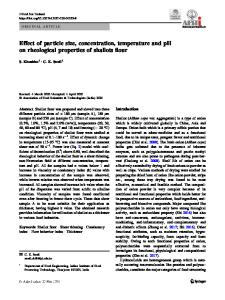The effect of concentration, reconstitution solution and pH on the stability of a remifentanil hydrochloride and propofo
- PDF / 974,442 Bytes
- 12 Pages / 595.276 x 790.866 pts Page_size
- 41 Downloads / 344 Views
RESEARCH ARTICLE
Open Access
The effect of concentration, reconstitution solution and pH on the stability of a remifentanil hydrochloride and propofol admixture for simultaneous co-infusion Emily Henkel1* , Rebecca Vella1, Kieran Behan2, David Austin3, Peter Kruger4 and Andrew Fenning1
Abstract Background: There are scenarios where pre-mixing and infusing analgesic and anaesthetic agents as a single intravenous (IV) solution is highly desirable; however, it is important to ensure the agents are compatible when mixed. As such, the long-term stability of a remifentanil-propofol mixture, and means of improving this, were assessed across a range of remifentanil concentrations, diluents, and time points. Methods: Remifentanil was reconstituted with ultrapure water, 0.9% saline, 20% saline, or 8.4% sodium bicarbonate solution (the latter two chosen for their pH characteristics, rather than their use in pharmaceutical reconstitution) and then mixed with propofol (1%) or further diluted with water to derive concentrations of 10–50 μg mL− 1. Remifentanil and propofol concentrations were determined initially and then periodically for up to 24 h using high performance liquid chromatography (HPLC). Mass spectrometry (MS) was used to detect degradation products in solutions containing 30 μg mL− 1 of remifentanil. Statistical analysis was performed using ANOVA and Student’s ttest, with a significance value of 0.05. Results: Isolated remifentanil (pH < 4) and propofol (pH 7.35) did not degrade significantly when reconstituted with water or saline solution over 24 h, while remifentanil reconstituted with sodium bicarbonate degraded significantly (P < 0.001, pH 8.65). Mixing with propofol substantially increased the pH of the mixture and resulted in significant remifentanil degradation for all reconstitution solutions used, while propofol remained stable (pH 6.50). The amount of degradation product detected in samples containing isolated remifentanil and a mixture of the drugs was proportional to the remifentanil degradation observed. Conclusions: Remifentanil stability is affected by both the reconstitution solution used and when mixed with propofol, with pH appearing to be a contributing factor to degradation. If the pH of the solution and concentration of remifentanil are correctly controlled, e.g. through the use of a more acidic diluent, an admixture of remifentanil and propofol may be useful clinically. Keywords: Chemical stability, Drug-drug interaction(s), HPLC, Pharmaceutical preparations, Propofol, Remifentanil
* Correspondence: [email protected] 1 Central Queensland University, School of Health, Medical and Applied Sciences, 554-700 Yaamba Road, Rockhampton, QLD 4701, Australia Full list of author information is available at the end of the article © The Author(s). 2020 Open Access This article is licensed under a Creative Commons Attribution 4.0 International License, which permits use, sharing, adaptation, distribution and reproduction in any medium or format, as long as you give appropriate credit to the ori
Data Loading...











